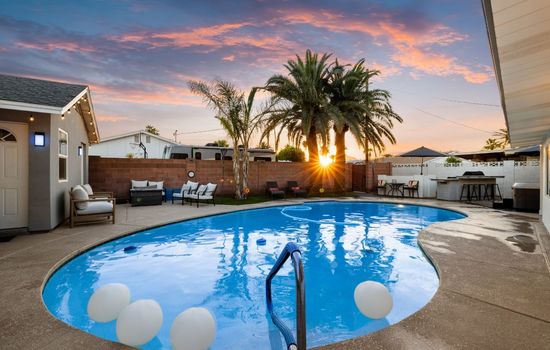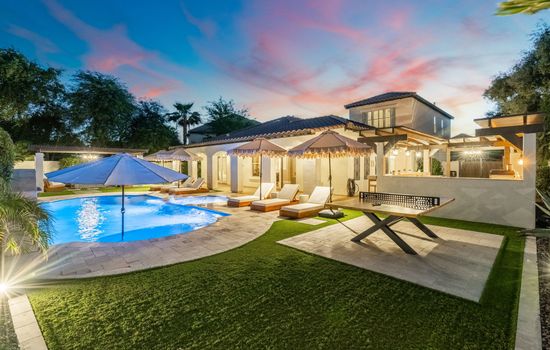The visitor center at Tonto National Monument is open every day from 8 am to 5 pm, except on Thanksgiving, Christmas, and New Year’s Day. It closes early at 1:45 pm on Christmas Eve and New Year’s Eve. During June to August, hiking must begin before 12 noon, and from September to May, hiking must begin before 4 pm.
The entrance fee at Tonto National Monument is $10 per person for those 16 and older; children under 16 are free. No annual membership is required, but America the Beautiful passes are accepted. Credits and debits only.
From Phoenix, take Highway 87 north toward Payson, then turn right on Highway 188 southeast, winding through scenic desert landscapes to this ancient cliff dwelling near Globe.
Parking is available near the visitor center, accommodating cars, smaller RVs, and motorcycles. No overnight parking. No parking fees.
Accessibility & permits
Emergency
- Cell service availability:None
Information not accurate?
Help us improve by making a suggestion.
Tonto National Monument, situated in the heart of Arizona’s Superstition Mountains, is a verdant oasis on the northeastern edge of the Sonoran Desert. This arid landscape, punctuated by the year-round waters of the Salt River, hosts two impeccably preserved cliff dwellings that once sheltered the Salado people from the 13th to the early 15th centuries. The monument’s 1,120 acres are a tapestry of Upland Sonoran Desert flora, with cacti, mesquite trees, and wildflowers painting the terrain in vibrant hues.
Early morning visitors are treated to the sighting of desert wildlife such as javelina, deer, coyotes, and even the occasional rattlesnake or bat. The climb to the Lower and Upper Ruins, although steep, rewards with panoramic views of Roosevelt Lake, a tranquil expanse that reflects the sky’s ever-changing colors.
In the summer, the air is alive with the songs of cicadas and the scent of blooming creosote bushes. Autumn brings a cool breeze and the ripening of paloverde trees, while winter’s mild temperatures make it an ideal time for hiking the trails that crisscross the monument. Spring awakens the desert floor with a kaleidoscope of wildflowers.
The monument’s visitor center museum showcases intricate Salado pottery and textiles, a testament to the craftsmanship of the region’s ancient inhabitants. Nearby, the town of Globe offers a charming blend of artisan shops and local eateries. For those seeking a more immersive experience, ranger-led tours and seasonal festivals provide a deeper connection to the land and its rich cultural heritage.
As the sun sets, casting a golden glow over the monument, it becomes clear that Tonto National Monument is not just a historical site, but a living, breathing embodiment of the American Southwest’s unique beauty and rich cultural tapestry.
- Area (mi²)
- 1.8
- Annual visitors
- 31 216
- Established year
- 1907
Top 3 Facts about Tonto National Monument
The area features a rugged terrain with elevations ranging from 2300 to 3900 feet, and it is located within the Lower Sonoran Life Zone, characterized by Sonoran Desert Scrub and other unique vegetation types.
In this arid yet vibrant landscape, saguaro cacti and cholla stand tall alongside palo verde and mesquite trees. Colorful wildflowers bloom from February to March, while Arizona walnut and sycamore trees thrive in the riparian areas. Home to over 160 bird species, including Bell’s vireo and yellow warbler, and hosting whitetail deer, mountain lions, and bobcats, this ecosystem is a tapestry of desert and riparian life. The perennial spring in Cave Creek Canyon supports a lush oasis, making it a haven for both flora and fauna.
In the heart of Arizona’s central highlands, ancient rocks tell a tale of geological grandeur. The terrain is defined by the Apache Group, rocks formed 1.6 billion years ago from ocean sedimentation. Here, orange cliffs adorned with white limestone stand tall, while giant red boulders perch on high desert mesas. The landscape is sculpted by millions of years of erosion, with streams cutting through the land and depositing coarse materials close to the mountains, creating a rugged yet mesmerizing landscape.
Family programs
- Junior Ranger
- Ranger-led Tours
- Self-guided Tours
- Workshops & Hands-on Activities
- Living History & Cultural Demos
- Scavenger Hunts
- Family Camping & Overnight
- Volunteer & Stewardship
- Youth Conservation
- Scouting Partnerships
- Virtual Junior Activities
- Arts & Crafts
- Water-based Adventures
Travel Tips
Plan Ahead
Plan a morning visit to avoid summer heat; start hikes before noon in June, July, and August. Bring water, wear sturdy shoes for paved and dirt trails. Visit the visitor center first, and consider guided hikes to upper dwellings from November to April. Pack meals as options are limited.
Pack Appropriately
Pack layers for varying desert temperatures, sun protection, and a waterproof backpack. Bring a map, compass, GPS, and a portable charger. Don’t forget hats, gloves, and sturdy hiking boots. Check the season for rain gear and dust protection.
Respect Wildlife
Respect the desert habitat: keep a safe distance from wildlife, avoid high daytime activities, and stay on designated trails to preserve fragile ecosystems and archaeological sites. Leave no trace.
Stay Informed
Stay on marked trails, avoid ledges and water, and check weather conditions. Follow park rules and fire restrictions. For emergencies, call 911 or park authorities at 480-987-9281. Stay informed to ensure a safe adventure.
Seasons
In spring, hike to ancient cliff dwellings under mild temperatures (60s-80s°F) and clear skies. Join the Riparian Photopoint Training in April, or explore trails bustling with desert wildlife. Ideal for outdoor enthusiasts, this season offers perfect hiking conditions before the summer heat.
Explore ancient cliff dwellings amidst summer’s sweltering heat (90s-100s°F). While tours are limited, the scenic hike to the lower ruins offers stunning views of Lake Roosevelt. Avoid peak temperatures; no special summer events.Visit for a unique, rugged experience.
Visit in fall, September to November, with mild temperatures (60s-80s°F) and clear skies. Enjoy guided hikes to the upper dwellings, a unique autumn experience amidst vibrant foliage and cactus landscapes. Optimal time before winter closures.
Visit from November to April when temperatures range from the high 50s to mid-20s Fahrenheit. Crisp winter air and occasional frost create a serene backdrop for guided tours and hiking, though road conditions can be hazardous. A unique season to immerse in desert tranquility.
Information not accurate?
Help us improve by making a suggestion.
Where to stay
Frequently Asked Questions
Ready to dive into what Tonto National Monument has to offer? Let’s tackle some of the burning questions you might have as you plan your visit!
-
The drive from Phoenix takes approximately 2 hours and 41 minutes, covering a distance of 84 miles. You can take State Highway 87 north toward Payson, then turn right on State Highway 188 and continue for 39 miles. Alternatively, you can take State Highway 60 east toward Globe and then turn left on State Highway 188 for 25 miles.
-
Dogs must be on a leash no longer than 6 feet at all times. Retractable leashes that extend beyond 6 feet are not allowed. Dogs must be leashed in the parking lot, picnic area, and on the trails where they are permitted.
-
You can park in the designated parking areas near the Visitor Center. There is adequate parking available, including spaces for vehicles with wheelchairs. However, there are no specific facilities mentioned for large RVs or motorhomes.
-
You can hike along scenic trails, including one with views of the Manatee River and another through a hardwood hammock. Join ranger-led kayak tours on the waterways, which last about 1.5 hours and require participants to be at least seven years old and weigh 50 lbs. Other activities include fishing, boating, swimming, bird watching, picnicking, and visiting the living history camp, Camp Uzita, to see historical reenactments. Pets on leashes are also welcome on the nature trails. The park offers indoor activities like watching educational films and exploring exhibits at the visitor center.



